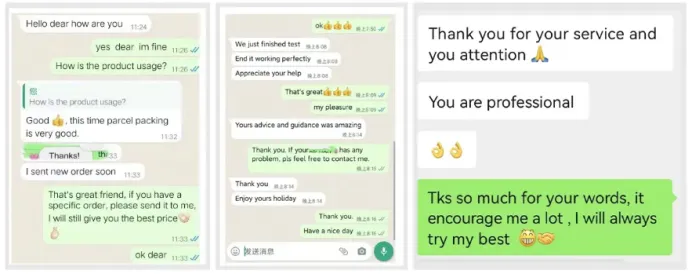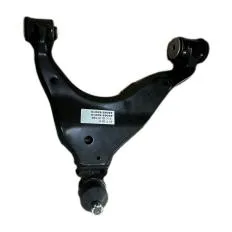The Toyota control arm serves a crucial role in the suspension system of a vehicle, acting as a key component that connects the steering knuckle to the vehicle's frame. Its main function is to control the motion of the wheels, helping to maintain stability, handling, and overall ride quality.
In terms of the manufacturing process, Toyota control arms are made with high-quality materials such as forged steel or aluminum to ensure strength and durability. Precision engineering and advanced welding techniques are used to create control arms that are able to withstand the rigors of daily driving while providing optimal performance.
When it comes to the performance of Toyota control arms, they offer a number of benefits. Firstly, they help to minimize vibrations and noise, resulting in a smoother and more comfortable driving experience. Additionally, control arms play a critical role in maintaining proper wheel alignment and tire wear, which can extend the lifespan of your tires and improve fuel efficiency.
Overall, the use of Toyota control arms can greatly enhance the handling and performance of your vehicle, providing a safer and more enjoyable driving experience. With their high-quality construction and precision engineering, Toyota control arms are designed to meet the demands of modern driving conditions, making them an essential component for any vehicle suspension system.
|
Tau OE |
48069-60010, 48068-60010 |
|
OEM |
Ae |
|
Hanga Waka |
Toyota Overlord 120 |
|
Tau Tuemi |
Kete Mana Whakatarewa |
|
MOQ |
50 PCS /Ia mea |
|
Mōkī Waka |
rite E hiahiatia ana |
|
Turanga |
Tuhinga o mua i raro i te whakatārewatanga |
|
Te Waa Arahi |
30-45 ra i muri i te whakatakoto |
|
Taketake |
Hebei, Haina |
|
Te kaha o te whakaputa |
10000000 Wae/Tau |
-
Te Whakapaipai me te Tukunga
Rahi mokete
40.00cm * 45.00cm * 45.00cm
Taumaha Kere mokete
8.000kg

-
Nga painga
1.Matching with the size of the original vehicle, Original installation.
2.Whakapaihia te whakaheke me te whakakore i te ngangau.
3.Haumaru, Pumau, Pumau, Roa, Whakaaetanga Kounga.
4.Driving me te noho pumau.
5.Whakaitihia te nekehanga rereke me te roa o te oranga o te pāmahana teitei.
6.Whakaoti momo waka.
7.He pai te mahi: he mea tino hangaia ia waahanga kia pai ai te mahi.
8.Ko te maimoatanga o te mata me te tino pai: Ko nga tohu he rite, he ki tonu, he maitai o te karaehe Tuatahi, te matotoru paerewa. Ki te rawaka rauemi, matotoru, deformation me te whati ātete.
9.Ko te kounga o te motuka taketake he pono.
Urupare Kiritaki
-
FAQ
- Q: He aha to tikanga mo te tarapi?
- A: He maha a matou momo kete, o te akoranga ka whakaaehia taau ake hoahoa, ka taea e matou te whakarite i te kete mo koe
- Q: He aha to tikanga utu?
- A: T / T 30% hei putea, me te 70% i mua i te tuku. Ka whakaatuhia e matou nga whakaahua o nga hua me nga kete i mua i to utu i te toenga.
- Q: Me pehea to wa tuku?
- A: Ko te tikanga he 5-10 nga ra mena kei roto nga taonga. he 15-20 ranei nga ra ki te kore nga taonga i roto i nga taonga, ka rite ki te nui.
- Q: Ka taea e koe te whakaputa i runga i nga tauira?
- A: Ae, ka taea e matou te whakaputa ma o tauira, tuhi hangarau ranei. Ka taea e tatou te hanga i nga maaka me nga taputapu.
- Q: Ka whakaratohia e koe he tauira? he kore utu, he taapiri ranei?
- A: Ae, ka taea e matou te tuku tauira mo te utu kore utu engari kaua e utu i te utu o te uta.
Q6: he aha te MOQ mo ia mea
A6: mena kei a maatau nga taonga, kaore he herenga mo te MOQ, a ko te tikanga MOQ kia 100 nga waahanga e manakohia ana.
- Q: Me pehea e hanga ai e koe to maatau pakihi mo te wa roa me te whanaungatanga pai?
- A: G1.We keep good quality and competitive price to ensure our customers benefit ; 2.We respect every customer as our friend and we sincerely do business and make friends with them, no matter where they come from
















































































































